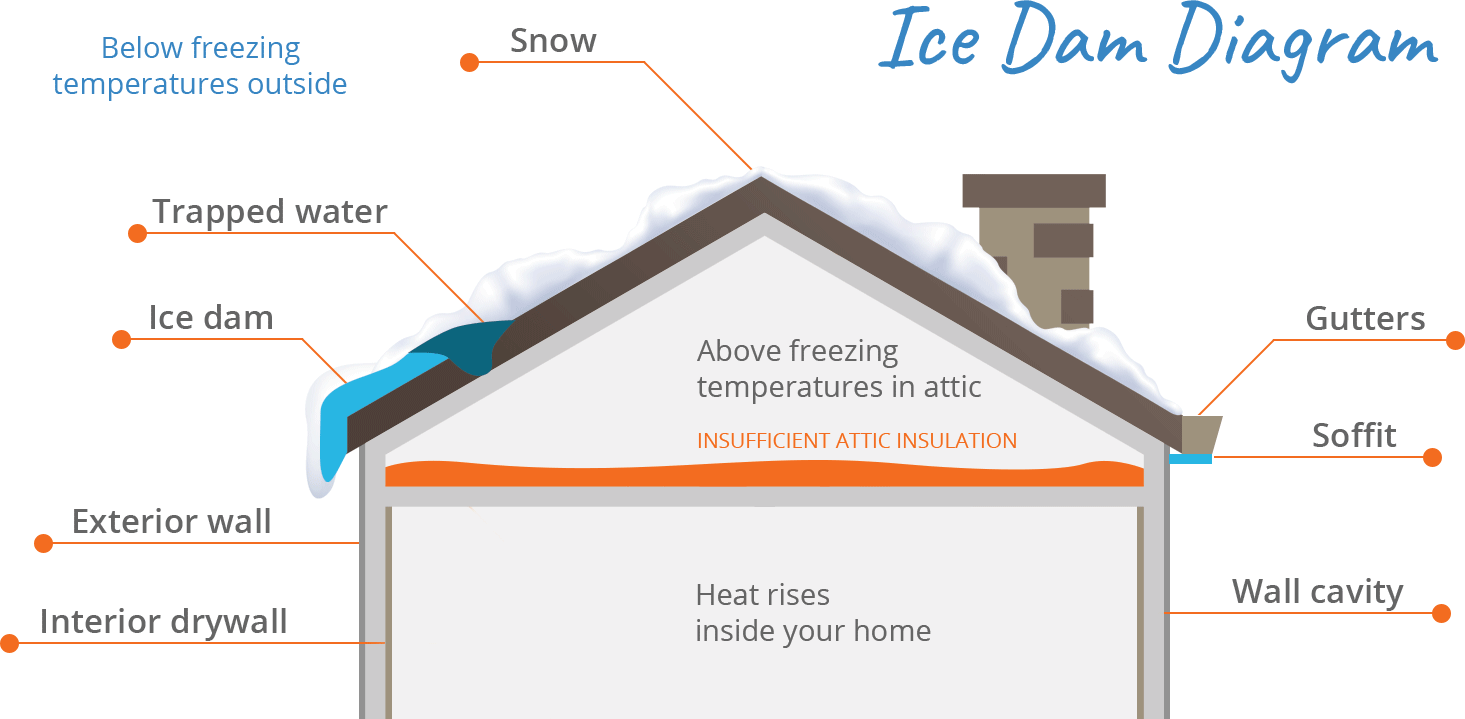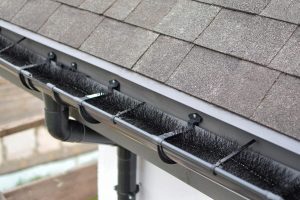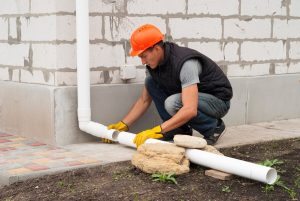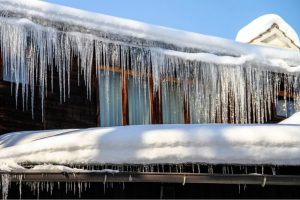Ice Dams: Scourge of the Canadian Winter
Nov 23, 2023

If you’re a resident of the Great White North, you’re likely already familiar with one of the greatest threats that plagues Canadian homes every winter: ice dams. Whether you just immigrated from warmer climes or you’ve recently become a homeowner for the first time, you might be wondering what ice damming is and, exactly how one might imperil your roof in the thick of winter.
Essentially, an ice dam is a mass of ice that can form at the edge of your roof, if the conditions are right. They form when the roof over the attic becomes so warm that the adjacent layer of snow melts. As the water trickles down to your eavestroughs, it freezes once again (this happens because your eavestroughs extend beyond your roof, and therefore aren’t subject to the heat loss through your roof). Over time, the mound of ice becomes so large that it’ll not only damage your shingles, it could also allow water to permeate into your home, causing damage to your insulation and drywall.
Ice dams can also occur if your gutters weren’t properly cleared of leaves, twigs, and other debris. If the snowmelt can’t be drained, it can freeze and form an ice dam even if your attic is properly insulated.
You should also be aware that the flatter the pitch of your roof, the greater the likelihood of an ice dam forming.
How to Prevent Ice Dams From Forming in the First Place
There are a number of ways to prevent ice dams from forming. If you’re physically able to do so, you can scrape the snow off your roof whenever there’s a substantial snowfall. This method will require you to scale your roof, so it might be best to hire a professional to do this for you.
If you’re in the market for a new roof anyways, and your home is particularly prone to the formation of ice dams, you might want to consider replacing your shingle roof with a metal or standing seam roof. Barring that, you could keep your shingle roof and simply install a metal drip edge on the bottom few feet of your roof.
While the methods above will help, they’re by no means a guarantee that an ice dam won’t form on your roof.
The best way to beat an ice dam actually starts within your home; after all, the problem generally starts with a warm roof caused by heat loss. First, you’ll want to seal any areas that allow the heat from your living areas to seep into the space immediately below your roof’s sheathing.
Then, you’ll want to take a look at your insulation – does it need replacing? Are there areas that aren’t properly insulated? Is the insulation rated for your region’s climate? Proper insulation is vital to ensuring that heat loss through your ceiling doesn’t occur.
Finally, ensure your attic (or the space beneath the roof sheathing) is properly ventilated. Ventilation allows excess heat to be dissipated, which prevents the underside of the roof from getting too warm.
Ice Dam Removal: You’ve Got One, Now How to Deal With it
Dealing with an ice dam can be dangerous work, so if your home has one, you might want to enlist the help of a professional. Clearing an ice dam requires you to work on a ladder and can result in damaging your shingles or your metal or plastic gutters, so be sure to exercise caution when undertaking this job.
Once you come face to face with the ice dam, begin by breaking it up into small pieces. It’s generally recommended that you use a small rubber mallet as other tools (like an axe or a hammer) can too easily punch through the ice and damage your shingles.
If the dam has formed in your gutter, you can apply calcium chloride ice melter to slowly melt the ice. Avoid using salt – while it will melt the ice, salt can damage your metal gutter and destroy any plants located near your downspout. If you’d rather not try to bust up an ice dam with a blunt tool, you can make your own ice melter delivery system using an old pair of pants.
Simply cut off one leg, tie off on end, fill it with ice melter and then tie it off. When finished, lay the pant leg across the ice dam – this will slowly melt the ice dam without the use of force. If you do this however, make sure your gutters and downspouts are clear or you’ll run the risk of another ice dam forming.
If you have any questions about ice dam removal or roofing you’d like to ask us please don’t hesitate to call us at (905) 387-3000 or contact us using the contact form on our website. We’d love to hear from you!





